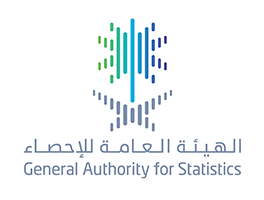Last update 5 / 12 / 2018
“GASTAT” Releases the Results of the Household Energy Survey for 2018

“GASTAT” Releases the Results of the Household Energy Survey for 2018
The General Authority for Statistics (GASTAT) released the results of the “Household Energy Survey (2018)” on its official website www.stats.gov.sa. It is a field survey that collects household energy data from a sample of households covering all 13 administrative regions across the Kingdom. This data can calculate many estimates and indicators about energy consumption in the domestic sector. The Household Energy survey aims at providing data related to the housing characteristics such as the type of housing, its components, the areas that are air-conditioned and heated, the impact of economic, social and geographical variables on energy consumption, household uses of fuel of all kinds to supplement the primary consumption coverage of various energy forms, which contributes to the preparation of energy balance, identifying patterns of energy consumption and the forms of energy used in the domestics sector.
The results of the household energy survey showed that (100%) of the households use electricity in their houses. (99.85%) of their houses are connected to the public electricity network. (0.11%) use a private network as a source for electricity, while (0.04%) use a generator as a source of electricity.
The results also showed that the percentage of households using solar energy at homes reached (1.45%).
The results also showed that the percentage of households using an independent electric meter reached (84.33%), while (15.67%) are using an electric meter shared with other houses, whereas (15.38%) use power regulator at home.
Regarding the use of fuel, the results showed that about (90.72%) of households use gas as the main fuel for cooking, while (8.74%) of households use electricity for cooking. In addition, (8.22%) of households use (wood, coal and agricultural waste) at home for heating and cooking.
Regarding the patterns and behavior of households in the rationalization of power consumption, the results showed that (59.84%) of households are interested in 65cutting expenses or
rationalization of power consumption. It also showed that (35.75%) of the households are likely interested in power consumption rationalization while only (4.41%) of the
households are not interested at all in cutting expenses or rationalizing power consumption. The results showed that (29.35%) of the households have power savers at their houses while (70.65%) of households don’t have power savers to rationalize consumption
Furthermore, the results of the Household Energy Survey showed that the total consumption of household fuel (fuel oil), kerosene and LPG reached more than 1 billion liters (1,023,585,906) in all regions of the Kingdom. The volume of consumption of diesel (fuel oil) reached about (3,519,261) three million five hundred thousand liters, which represents about (0.34%) total consumption volume, while the consumption of gas (kerosene) reached more than nineteen million L (19,691,996) representing about 1.92% of the total volume of consumption. The volume of consumption of gas (LPG) reached about one billion liters (1,000,374,649) in 2018, representing (97.74%) of the total volume of consumption.
The results of the Household Energy Survey showed that (35.14%) of households in the Kingdom spend less than 5% of their income on electricity and other sources of fuel, while (43.08%) of the households spend between (5-10%) on energy, while (15.76%) of households spend between (11-15%) on energy. (4.01%) of households spend between (16-20%) of their income on energy and (2%) Spends more than (20%) of its income on electricity and other fuel sources.
It is worth mentioning that the Household Energy Survey of 2018 is the second survey conducted by the General Authority for Statistics on an annual basis.
